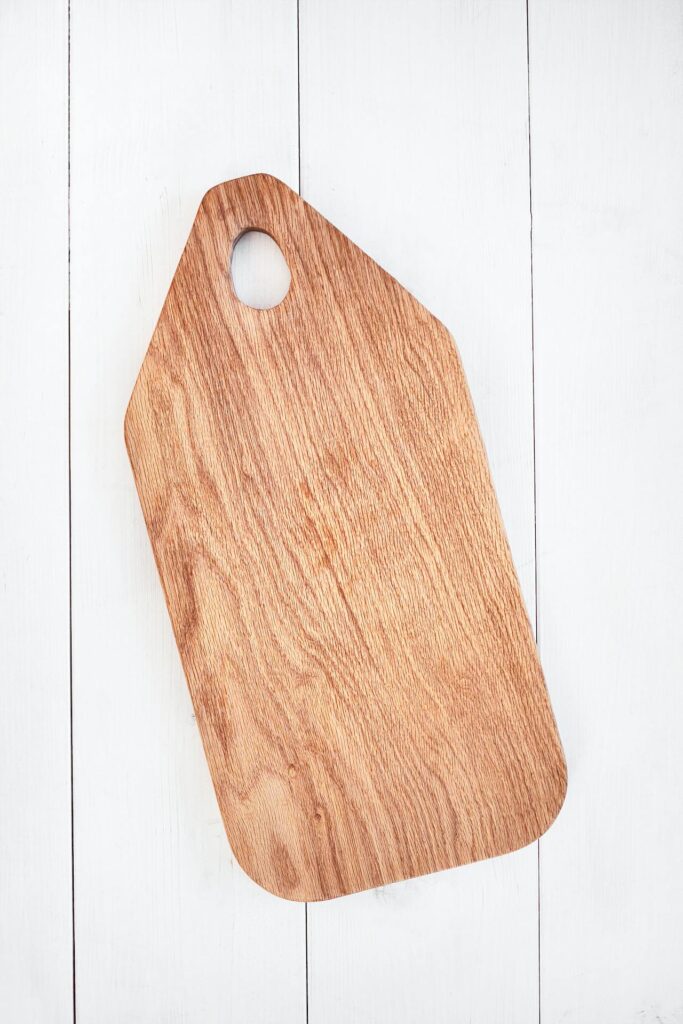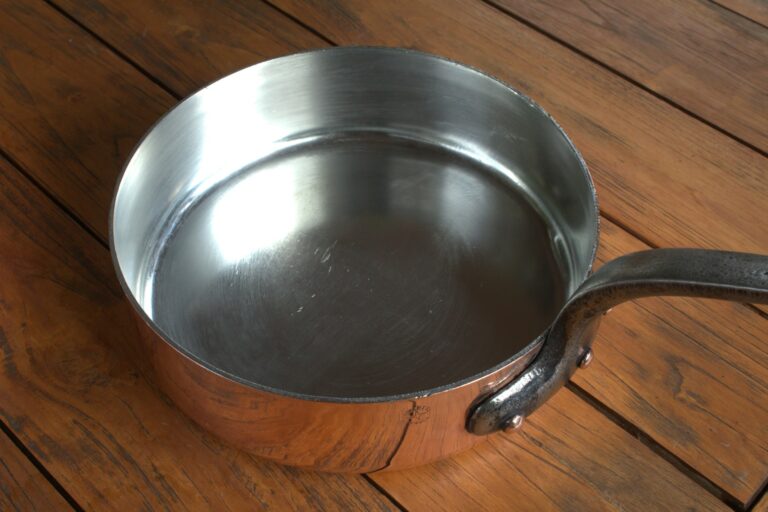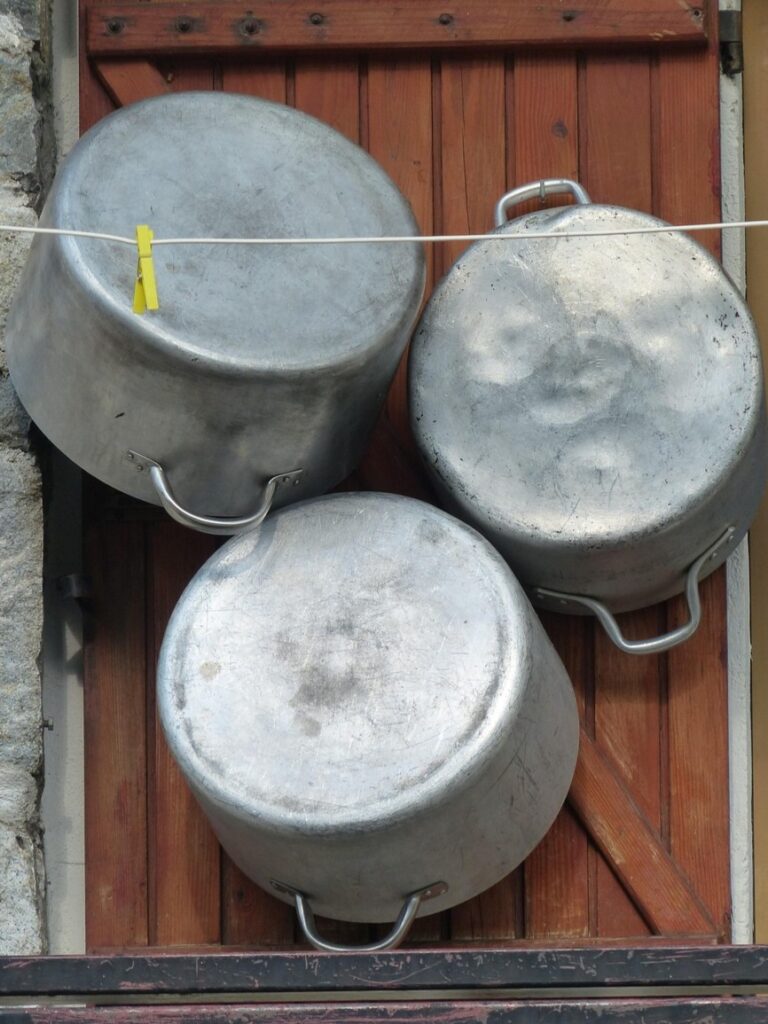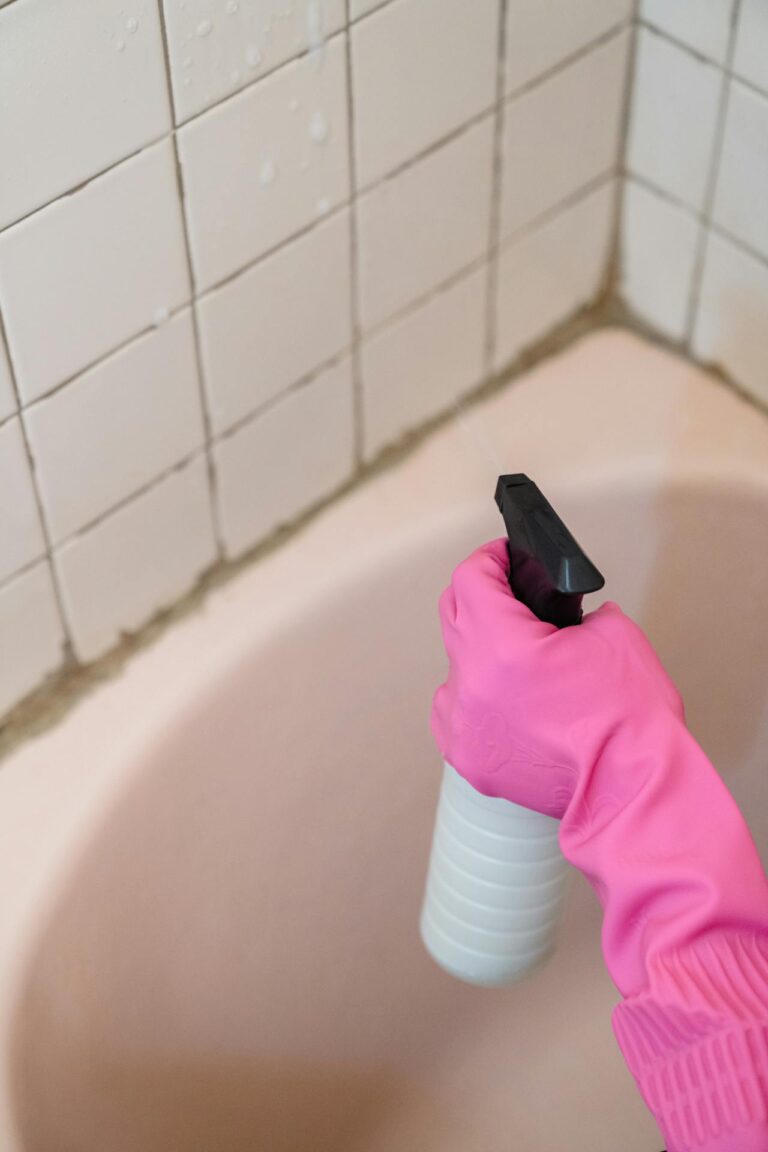Cutting boards take a beating in the kitchen. Food particles settle into grooves, oils seep into wood grain, and stains start showing up no matter how quickly you rinse. The good news? Getting them properly clean doesn’t require fancy products or complicated routines. Let’s dig in.

Why Food Residue Sticks Around
Cutting boards trap food in ways that regular dish soap doesn’t always reach. Wood absorbs moisture and oils, while plastic develops knife scars that create tiny hiding spots. Understanding this helps explain why a quick rinse rarely does the job completely.
1. Start With Hot Water and Dish Soap
Hot water loosens oils and softens stuck-on bits before they harden. Add dish soap and scrub with the rough side of a sponge, working in circular motions across the entire surface. Pay extra attention to any grooves or cut marks where food tends to hide.
Rinse thoroughly under running water. Hold the board up to the light to check for any remaining film or particles.
2. Use Coarse Salt as a Natural Scrub
Sprinkle coarse salt directly onto the cutting board surface. The granules act as a gentle abrasive that lifts stubborn residue without scratching. Use half a lemon to scrub the salt around, squeezing slightly as you work.
The combination breaks down proteins and cuts through grease. The lemon also helps neutralize odors from garlic, onions, or fish. Rinse well and wipe dry.
3. Try Baking Soda for Stubborn Stains
Make a paste with three parts baking soda to one part water. Spread it over problem areas and let it sit for 10 minutes. The mild alkaline properties help break down organic matter that soap alone might miss.
Scrub gently with a damp sponge, then rinse. This works particularly well on plastic boards that have developed discoloration over time.
4. Tackle Grease With White Vinegar
Spray or pour white vinegar directly onto the board after washing with soap. Let it sit for a few minutes to cut through any remaining grease or film. The acidity breaks down oils and helps sanitize the surface.
Vinegar works on both wood and plastic boards without causing damage. Rinse with cool water and dry immediately to prevent warping.
5. Use Hydrogen Peroxide for Deep Cleaning
Pour 3% hydrogen peroxide over the board surface and let it fizz for a few minutes. The bubbling action lifts embedded particles from cracks and grooves. This method works well for boards that look clean but still feel slightly tacky.
Rinse thoroughly after the fizzing stops. This approach is gentle enough for regular use and helps with sanitization.
6. Scrape Away Dried-On Bits
Sometimes food dries before you get to cleaning. Use a bench scraper or the edge of a metal spatula to gently lift hardened residue. Hold the tool at a 45-degree angle and work in short strokes.
This prevents you from grinding the debris deeper into the board while scrubbing. Follow up with hot soapy water once the bulk is removed.
7. Address Odors With Lemon and Salt
Strong-smelling foods leave behind oils that regular washing doesn’t eliminate. Cut a lemon in half and dip it in coarse salt. Rub it over the entire board, focusing on areas where you cut pungent ingredients.
The citric acid neutralizes odor-causing compounds. Let it sit for five minutes before rinsing. This technique refreshes boards between deep cleans.
8. Clean Grooves With a Brush
Knife marks create channels where food particles settle. Use a dish brush or an old toothbrush to scrub along these grooves. The bristles reach into crevices that sponges can’t access effectively.
Work the brush back and forth along each groove. This step makes a noticeable difference on heavily used boards with deep scoring.
9. Dry Completely After Each Wash
Water sitting on cutting boards encourages bacterial growth and warping. Stand the board upright in a dish rack or prop it against the wall. Air circulation on both sides speeds up drying.
Never store a damp board flat in a cabinet. Wood boards especially need thorough drying to maintain their integrity and prevent odors.
10. Sand Down Plastic Boards When Needed
Plastic cutting boards develop rough surfaces over time. Fine-grit sandpaper smooths out the texture and removes the top layer where bacteria hide. Work in one direction with light, even pressure.
Wash the board thoroughly afterward to remove any plastic dust. This extends the life of plastic boards that might otherwise need replacing.
What Doesn’t Work Well
Skip harsh abrasives like steel wool on wood boards. They create splinters and damage the surface. Bleach can discolor wood and break down the fibers over time, making boards rougher.
Dishwashers warp wooden boards and dull plastic ones. The high heat and harsh detergents can do more harm than good. Hand washing takes a few extra minutes but keeps boards in better shape.
Conclusion
Clean cutting boards don’t require complicated systems or specialty products. Hot water, basic pantry staples, and a few smart techniques handle everything from daily maintenance to deep cleaning. Pick the methods that fit your routine and the boards you use most.






